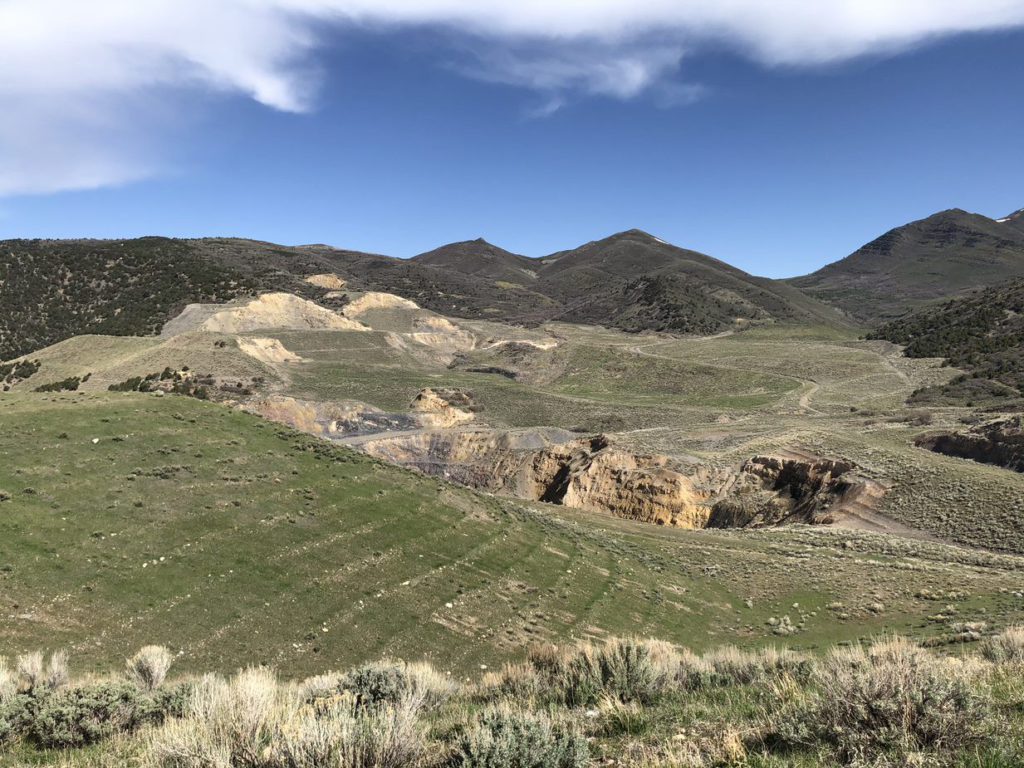Revival adds second gold project with takeover deal for Ensign Minerals

Revival Gold (TSXV: RVG) said on Wednesday it has signed an agreement to buy privately held exploration company Ensign Minerals in an all-stock deal worth approximately C$21.9 million. This acquisition gives US-focused Revival a second gold exploration asset to complement its Beartrack-Arnett project in Idaho.
Ensign’s flagship Mercur project in Utah is located 57 km southwest of Salt Lake City in the Oquirrh Mountains region, which is known to host sediment-hosted gold deposits. Bingham Canyon, one of the world’s largest copper-gold mines, is also situated there.
Historically, approximately 2.6 million oz. of gold were mined from the Mercur district, including 1.5 million oz. by Getty Oil Company and later Barrick Gold between 1983-1998, after which it closed due to low gold prices. Since then, Barrick completed reclamation of the Mercur site.
From 2020 to 2022, Ensign entered various agreements to consolidate the Mercur project area, which now covers 62.55 square kilometres divided between private land, federal claims, and state leases. Amongst the deals was an option to acquire Barrick’s interest in the area for $20 million.
Work by past owners has resulted in the delineation of an inferred resource estimate that totals 89.6 million tonnes grading 0.57 gram per tonne gold for 1.64 million oz. of contained metal. This estimate has an effective date of Feb. 1, 2024, and is based primarily on exploration of the private land.
By adding the Mercur project, Revival’s gold resource base would now grow to 3.8 million oz. in the inferred category, on top of the 2.4 million oz. measured and indicated category already at Beartrack-Arnett, for which permitting preparations are underway.
CEO Hugh Agro says the combined mineral resource will vault Revival Gold ahead to become one of the largest pure gold development companies in the US. With Mercur, he believes the company is obtaining a “high-quality complementary project” at an attractive acquisition price of about $10 per ounce in situ.
Revival Gold considers the large regional package at Mercur to “hold attractive potential for additional discoveries” based on the project’s track record of past production and the results of recent fieldwork undertaken by Ensign.
In the short term, its primary objective with Mercur over the next 6-12 months will be to advance metallurgy, optimize the project’s geological model and pursue a potential preliminary economic assessment (PEA), the company said.
While advancing towards a PEA, Revival Gold expects to continue the compilation of historical data, property-wide prospecting, geological mapping and planning for potential future exploration drilling.
Agro said the addition of Mercur will shorten the estimated timeline to heap leach gold production while increasing the potential production scale of the company’s heap leach gold business to approximately 150,000 oz. per year.
To complete the deal, nearly 61.4 million Revival Gold shares, more than half of those outstanding, will be used to acquire Ensign’s 52.6 million outstanding stock. This share exchange ratio (1.1667:1) gives Ensign an implied value of C$0.4164 per share, a 17% premium over its 20-day volume weighted average of C$0.3569.
Upon completion, current Revival Gold shareholders would own 65% of the new company, with former Ensign holders owning 35%.
Ensign had previously agreed to a takeover by Vancouver-based Taura Gold (TSXV: TORA) in October 2023 for an implied value of C$24 million. However, the deal fell through earlier this year due to disagreements over how the Mercur project resource was calculated.
Revival Gold’s shares were up 1.1% at C$0.38 by 10:30 a.m. ET on the news, giving the Toronto-based gold developer a market capitalization of C$42.4 million ($31m).
{{ commodity.name }}
{{ post.title }}
{{ post.date }}


Comments